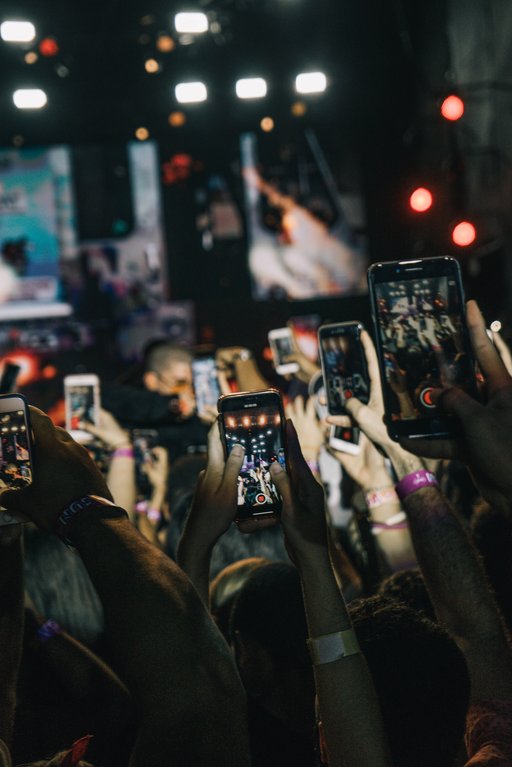Monitoring Digital Data for Mental Health
There are pros and cons of using data to monitor and predict mental health problems - in the Nordics as well as elsewhere.
Summary: Technology can harvest different types of data available through digital devices. Changes in a person's behaviour, both digitally and physically, can be picked up and used to help to predict mental health issues. While some herald the use of such data as more objective than more traditional forms of psychiatry and say it will revolutionise the sector, there are a number of drawbacks, not least that everyone is different: One person's nice quiet day, may be another's lonely hell.
Where digitalisation meets the mental health profession

Digital technology has made it possible for extraordinary quantities of data about our behaviour to be harnessed. Data about your location, how many people you’re physically close to, how many people you talk to or text with, if you’re standing still or moving around, and so on. Today, psychiatrists and psychiatric researchers, often alongside social scientists, are working on using this data to diagnose, treat, or even predict mental health problems. This is sometimes called digital phenotyping.
Digital phenotyping is the process of sketching people’s phenotypes from data taken from digital devices. The term ’phenotype’ usually refers to the traits of a person, such as hair or skin colour or even behaviour. Digital phenotyping promises to be ground-breaking in that it could individualise mental health care and, rather than a person visiting a doctor or mental health professional when they start to have a problem, warning signs could be picked up and digital devices could potentially alert the person even before they know they have a problem.
How does data help diagnose mental illness?
This approach is founded on the assumption that people act differently than normal when they are having mental health difficulties – including their online behaviour. Programmes on a smartphone, for example, can analyse whether there are differences in patterns of behaviour. Perhaps a person suffering from depression is going outside less, texting or speaking less with their friends, and so on. The idea of digital phenotyping is that such changes in behaviour would be detectable in, for example, their GPS data.
The hope amongst the proponents of digital phenotyping is that this may be more accurate than some of the current ways of diagnosing mental health problems and mental illness. Today, much of diagnosis relies on what a person says about how they feel. So, a doctor might ask someone how they’re feeling, how long they’ve been feeling that way, if they’re sleeping poorly, if they feel ‘down’ and so on (usually, this is also done with the help of questionnaires and other tools). In an important way, mental health problems are subjective problems that fundamentally relate to how we are feeling. However, when we report how we feel, and how we have been feeling, there is also the chance for inaccuracies to sneak in. That’s why many psychiatrists and psychiatric researchers hope that even more objective tools can be developed, to provide better data and insights into how people are feeling.
Particular relevance to the Nordic countries?
These developments are particularly pertinent in a Nordic context. Some of the current research on ‘digital phenotyping’ has been made by Danish researchers, working with Danish patients. Similarly, with the high level of digitalisation in the Nordic public sectors, high levels of smartphone ownership, psychiatric sectors under pressure – for example in terms of funding – and with renewed interest in developing better and more accurate ways of diagnosing mental health problems, especially in the face of the current ‘crises’ of mental health both in Denmark and across many Western countries, these developments might presumably only increase.
Denmark as well as other countries are currently experiencing a 'mental health crisis' with more people feeling poorly, more people being diagnosed, and more waiting times with psychiatrists. Some of the hopes vested in digital phenotyping is that it could alleviate some of these challenges.
What types of data are available through digital devices?
It is possible to identify three general types of data that can be involved in harnessing data through digital devices for mental health purposes:
- Sensor data can be used to obtain information about a person’s life, their movements, their social contacts and so on, and includes GPS data, speed, distance to other phones, estimated temperature and heart rate. These sorts of measurements allow programmes to determine e.g. the average amount of time spent in certain places, travelling etc.
- Activity data can be used to obtain information that has been actively inputted by a person, such as the amount of time used on particular apps, messaging frequency and type (data harvested about messaging usually includes when and where they were sent and sometimes to whom, but not the content of the messages), and so on. This may include active self-reporting through, for example, longer mental health questionnaires or responding to quick questions about your mood over a period of time.
- Social media activity and content can be used not only to track when and how people post (to try to detect anomalies, for instance), but also the content in terms of language used about how a person feels.
Collecting a psychiatric history through data
Whatever data comes out of one’s smartphone, it still needs input from human beings. There are no algorithms or technologies which can gauge a person’s mental health based only on the raw data from a phone. So, in most studies, they ask the participants to also answer questions about their mental health. This is because most studies within digital phenotyping rely on a mathematical technique called machine learning. With the use of machine learning, an algorithm can learn to label particular things correctly. This is sometimes used in hospitals, where algorithms have been trained to detect lung nodules on chest x-rays. But to teach the algorithm to classify correctly, it needs to have a level of ‘ground truth’ to work from. So, in the case of correctly labelling chest x-rays, the algorithm needs to learn by seeing x-rays that are correctly labelled.
Similarly, when it comes to digital phenotyping for mental health, no algorithm can predict anything solely from, for example, GPS data. It needs questionnaires or similar to establish the ‘ground truth’ – how a person is feeling. Then, over time, it can get more and more accurate in detecting this. For example, in one study with college students, they found a correlation between length of smartphone use in places of study (such as a library) and a reduced ability to concentrate. But we only know that the students experienced less ability to concentrate because they answered a questionnaire about it. Otherwise, this would not be possible to infer from the data.
Digital data should be used with caution
Digital phenotyping has been hailed as ground-breaking. A former director of the US National Mental Health Institute even suggested that ”the revolution in technology and information science will prove more consequential for global mental health” than the ”revolution” in neuroscience (see Insel, 2018). Equally, many resources are being ploughed into its development. However, there are several methodological and ethical reasons to be cautious.
Firstly, diagnosis through digital phenotyping can be built on subjective, human assumptions just as much as normal mental health care. For example, it is possible for bias to skew programmes as they are usually based on algorithms which have, in turn, learnt from a particular population or data set. These data sets are usually based on people in certain countries who hold certain positions in society (such as, US college students). Their normal characteristics cannot necessarily be applied to others; the sociability and mobility of college students in a country like the US is likely to be vastly different from, say, a working parent on the other side of the world. It is in fact well-established that inequalities can be coded directly into health applications (see, for example, Gianfrancesco et al from 2018 for more on this).

Secondly and despite the fact that these data sets are frequently combined with other more active methods, there does appear to be important limits to using passive data. One person may not feel lonely staying at home and not having much social contact, but this type of behaviour may indicate loneliness for another person with a different personality type. Data collected passively is therefore likely to not account for how individuals perceive their own situation. Frankly, some of the passively obtained data can actually be wrong: Harvesting Bluetooth data to find out how many people someone has been physically close to may not be a true representation of what has happened as they may have left their phone in their pocket or somewhere else. While digital information may be extremely useful combined with other data, it should be used with caution.
Thirdly, a great emphasis has erroneously, I would argue, been placed on a person’s biological determinants and prediposition to mental health problems, both within research and society in general. This focus could potentially now be switched to digital determinants with the blossoming of this new, cutting-edge type of research. Understandably, researchers and mental health professionals want to get to the bottom of mental health problems and will use all information in their grasp to do so. However, an overriding focus on something that is inherent to an individual can undermine the importance of the social, cultural and economic context, all issues that are crucial when analysing mental health problems. In fact, the term ’digital phenotype’ itself can be perceived as problematic as it suggests we look inwards at something inherent, rather than outward at the social context, which is equally – if not more important – when it comes to diagnosing, treating and predicting mental health issues.
Differing perspectives on psychology can help us see mental health diagnosis in a new light
This article is published in response to young people's interest in digitalization, the media, and mental health.
This article is largely based on the following two academic papers:
- Rasmus H. Birk and Gabrielle Samuel, 'Digital Phenotyping for Mental Health: Reviewing the Challenges of Using Data to Monitor and Predict Mental Health Problems', Curr Psychiatry Rep. 24, 10 (2022), pp. 523-528; and,
- Rasmus H. Birk and Gabrielle Samuel, ’Can digital data diagnose mental health problems? A sociological exploration of ’digital phenotyping’, Sociology of Health and Illness, (2020) pp.1-15.
Further reading:
- Milena A. Gianfrancesco, Suzanne Tamang, Jinoos Yazdany, and Gabriela Schmajuk, 'Potential Biases in Machine Learning Algorithms Using Electronic Health Record Data', JAMA Intern Med 1;178, 11 (2018), pp. 1544-1547.
- Thomas R. Insel, 'Digital phenotyping: a global tool for psychiatry', World Psychiatry 17, 3 (2018), pp. 276-277.

